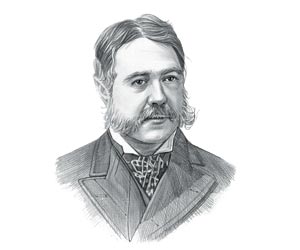|
|
|
|
|
The steel frame of the Home Insurance Building supported the entire weight of the walls, instead of load-bearing walls carrying the weight of the building. William Jenney is often referred to as the “Father of the Skyscraper” and his innovative development and architectural design led to the "Chicago skeleton" form of construction. The Home Insurance building was the first fully metal-framed building, and is considered the first skyscraper.
Fast Facts about the First Skyscraper for kids: Fact Sheet Name: The Home Insurance Building Location: Chicago, Illinois, United States of America Name of the Designer and Architect: William Le Baron Jenney (1832-1907) Date the first Skyscraper was completed: 1884 Original Height of the First Skyscraper was 138 ft (42 m) Number of Storeys: Ten-storey construction Floors added: Two additional floors were added in 1890 Extended height: 180 feet (54.9 meters) Date the First Skyscraper was Demolished: 1931 Name of Building now on the site: The Bank of America Building
The
First Skyscraper Fact Sheet for kids In 1871 the Great Chicago Fire devastated the 'Windy City' destroying $200 million dollars worth of property and making over 100,000 people homeless Following the terrible disaster, the city of Chicago embarked on a building frenzy to re-build their metropolis. The construction materials were no longer wood. The buildings were made of stone, brick iron and a new material called steel. Steel: The Bessemer Process was invented by Henry Bessemer in 1856 that created steel from iron. The Bessemer process was improved in 1876 by Sidney Gilchrist Thomas which produced steel cheaply and efficiently. In the fall of 1883 William Jenney won a competition held by the Home Insurance Company in New York for a new building in Chicago Steel: The cheap production of steel opened up the possibilities of a new style of architecture using steel beams. William Jenney used metal columns and beams, instead of stone and brick, to support the upper levels of the building. He was the first to incorporate steel as a structural material. The design of the Home Insurance Building in Chicago revolutionized architecture and enabled the architect William Le Baron Jenney to create an enormously tall steel frame building which became known as the "skyscraper" Engineers and Architects had encountered numerous problems with tall buildings. Brick could not bear the weight of buildings higher than five or six stories.
There were many advantages to the new, innovative design in construction:
The architectural design of tall building was made possible by the use of electricity:
The Home Insurance Building building was extended by two storeys in 1890. The viability of the skyscraper was due to the invention of the elevator, the use of steel skeletal structures and the boom in office work by the 1890s. The first skyscraper in New York was the Tacoma Building on lower Broadway that was built in 1899 by George Fuller (1851-1900) The Home Insurance Building was demolished in 1931 to make way for another skyscraper, originally called the Field Building and is now known as the Bank of America Building. |
| US American History |
| 1881-1913: Maturation Era |
|
|
|
|
|
First Published2016-04-19 | |||
|
Updated 2018-01-01 |
Publisher
Siteseen Limited
| ||
|
|

